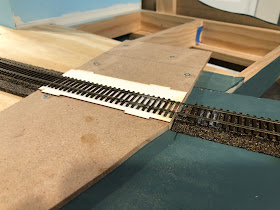Video #3 is actually two parts - the majority of the first half of the video shows lots of switching in Palmer and Willimantic, and then shifts to a ride in the caboose up the Richford Branch. (The second half of volume #3 is a cab ride on the Willimantic sub in Connecticut).
I was going through some boxes a couple of weeks ago and came across the DVD - which I haven't looked at in a number of years. I went ahead and popped it into the DVD player to see if there was anything useful to me. In short, there was. I did a few "screen captures" with my iphone - they actually turned out fairly decent - considering this was a DVD remastered from a VHS that was sourced from 8mm home movie shot with a handheld camera on a caboose that was bouncing around quite a bit. I've mentioned the Richford plywood plant (which burned in 1954) before - this is the only color image (and one of only a few views of any type!) of that plant I've seen, ever...
 |
| Atlas Plywood in Richford, shortly before it burned to the ground in October 1954. |
 |
| Approach into the CV's Richford Yard |
 |
| Another "only time I've seen a photo of ..." - the HP Hood Creamery in Richford. |
 |
| In Enosburg Falls, that's a coal dealer shed in the right foreground. |
 |
| Enosburg Falls - note how tight this area was. Basically east of Main Street, West of Plesant Street. Feed mill, with a "Wirthmore Feeds" sign atop the roof barely visible to the left. |

















